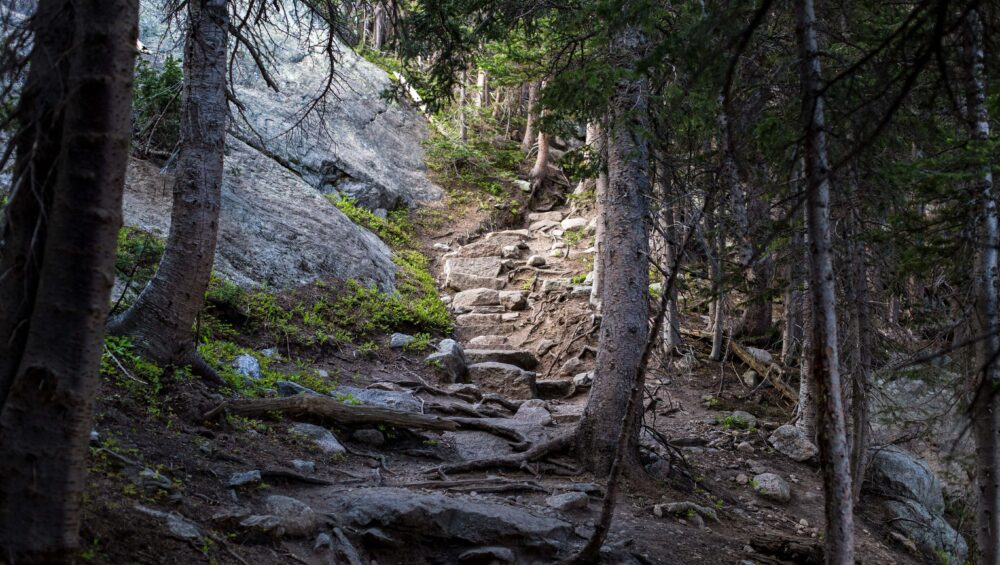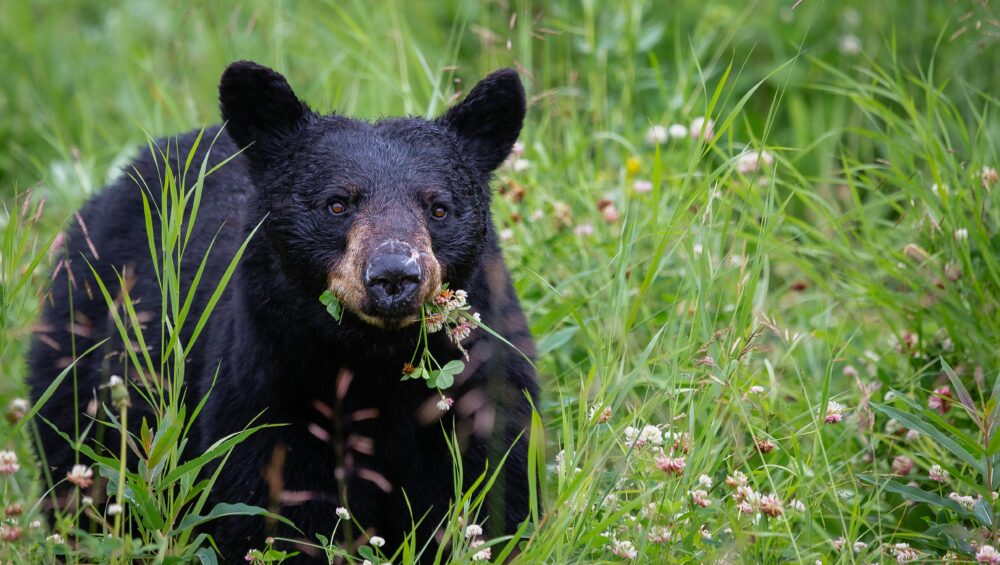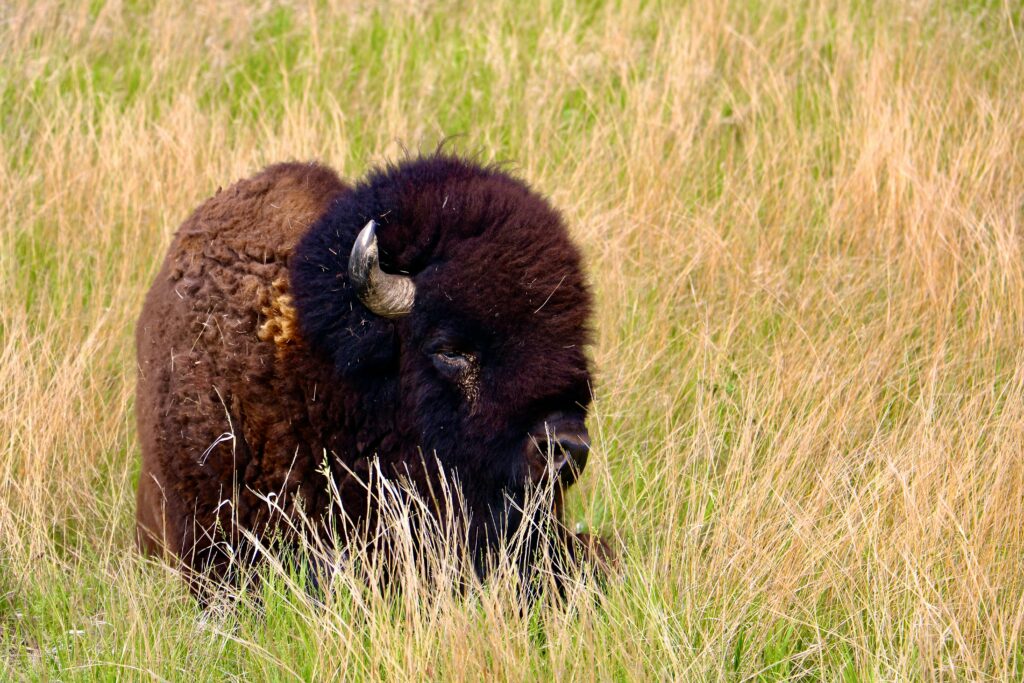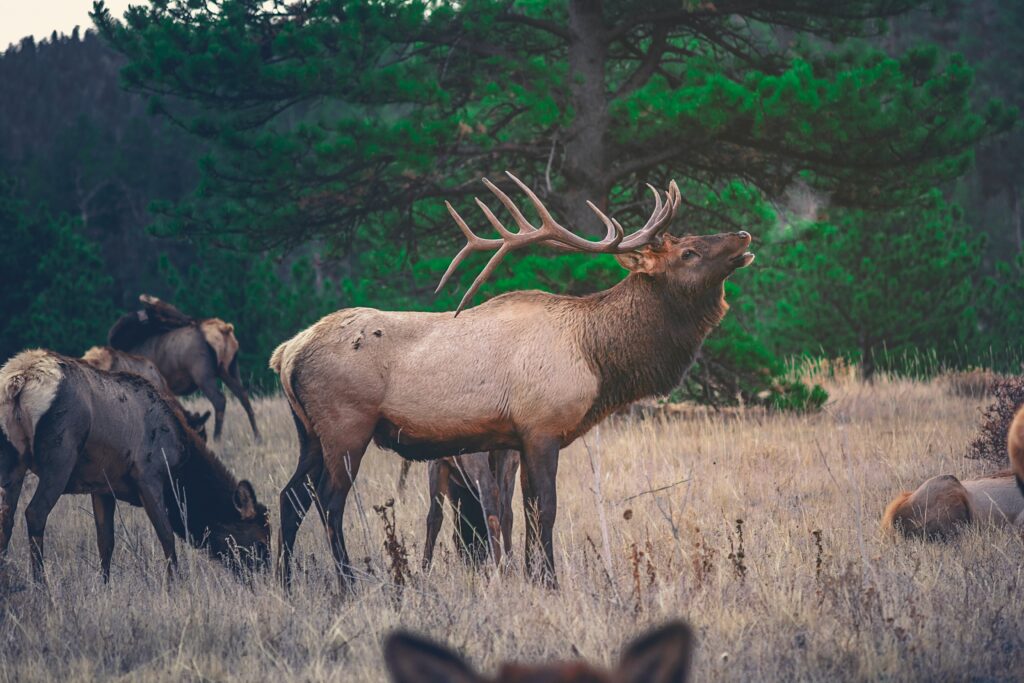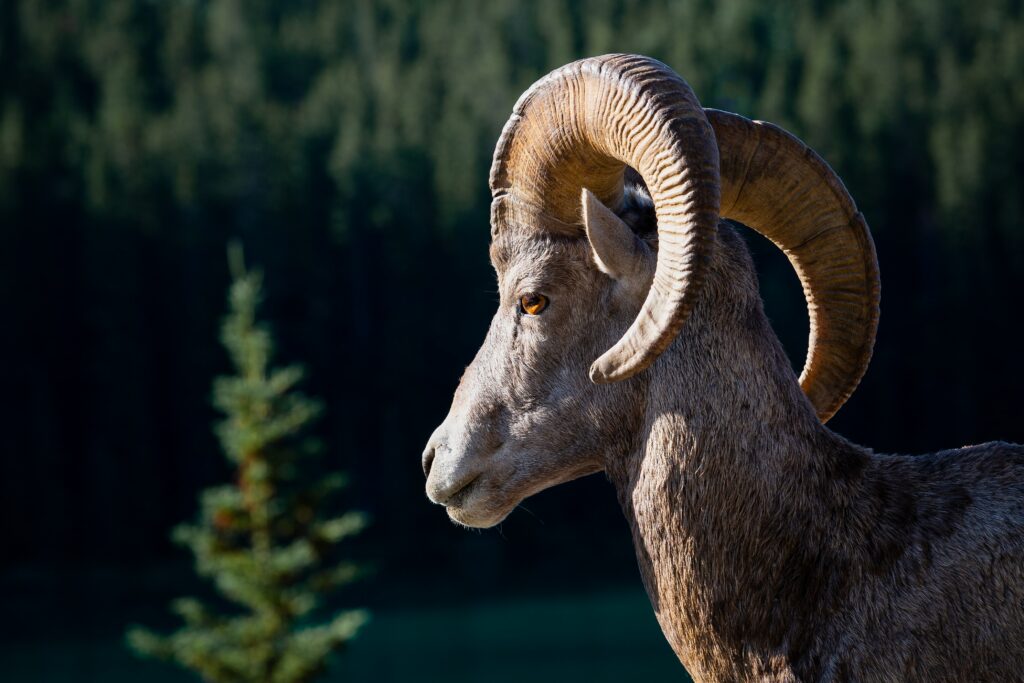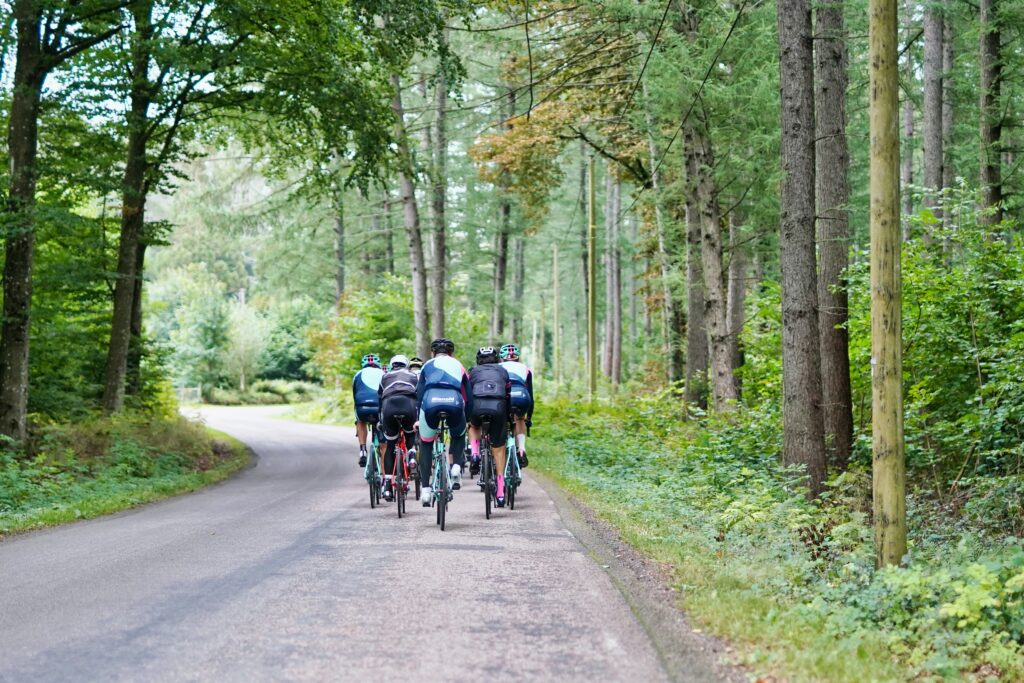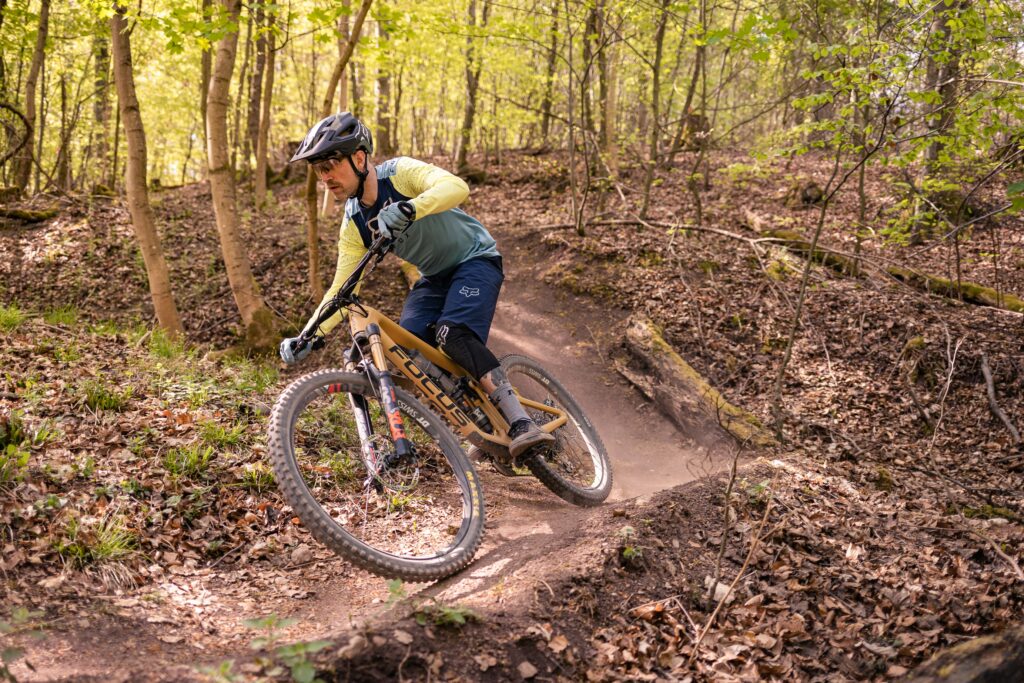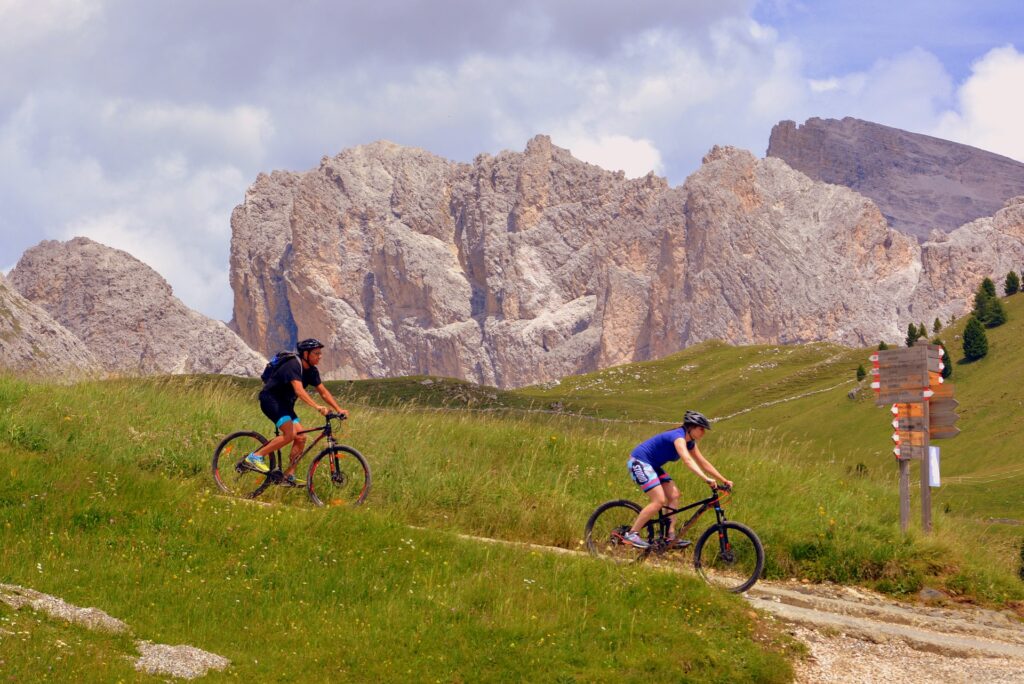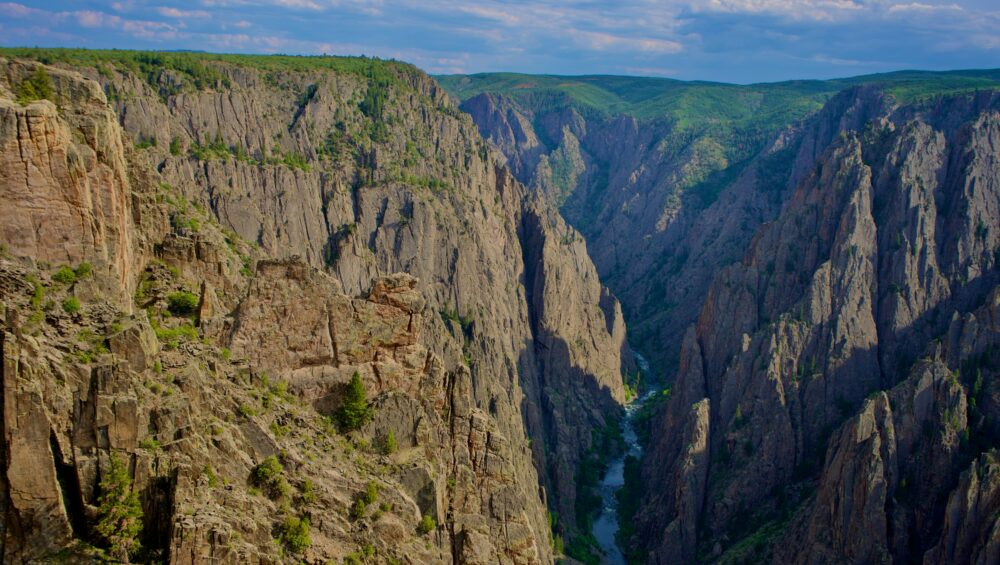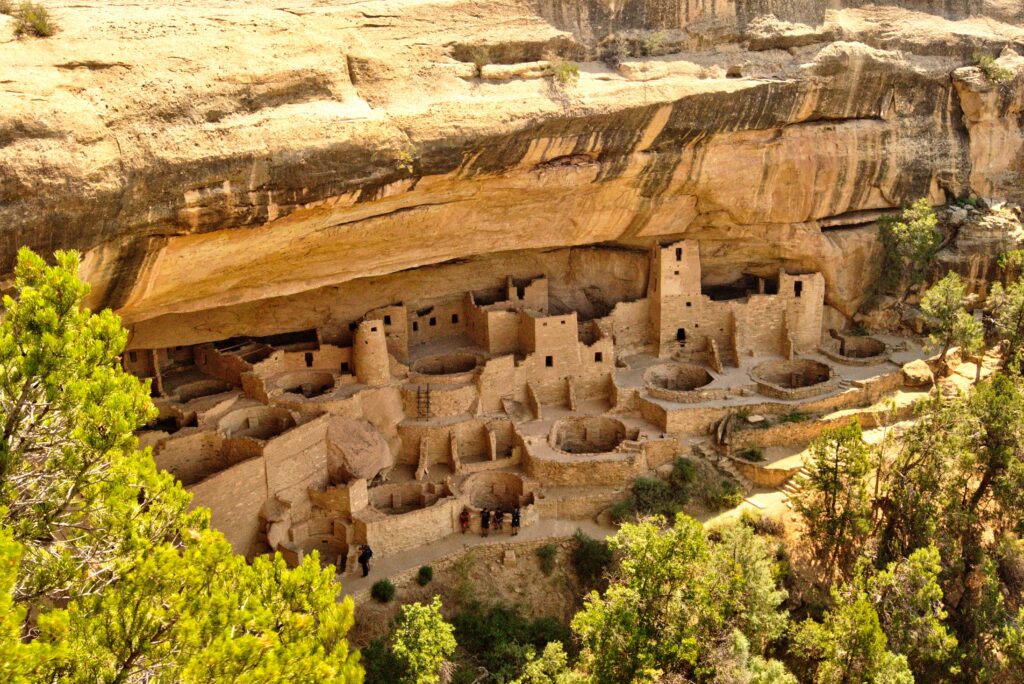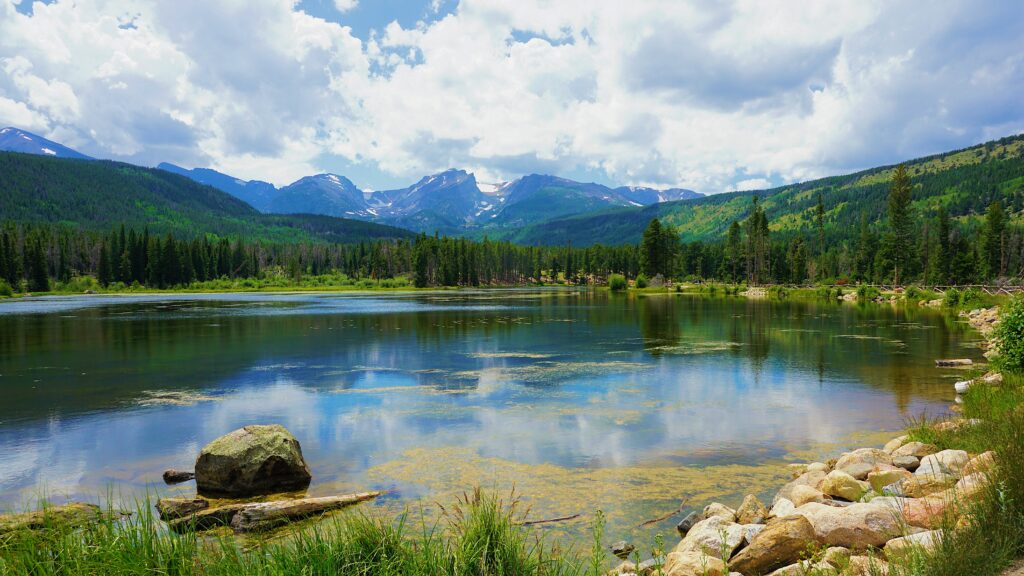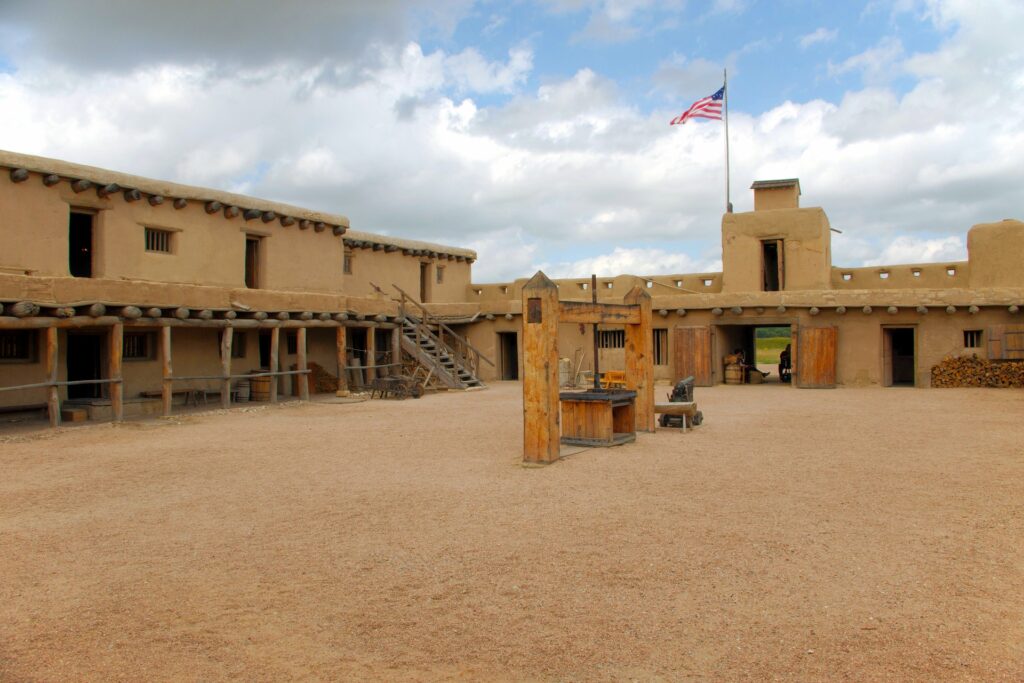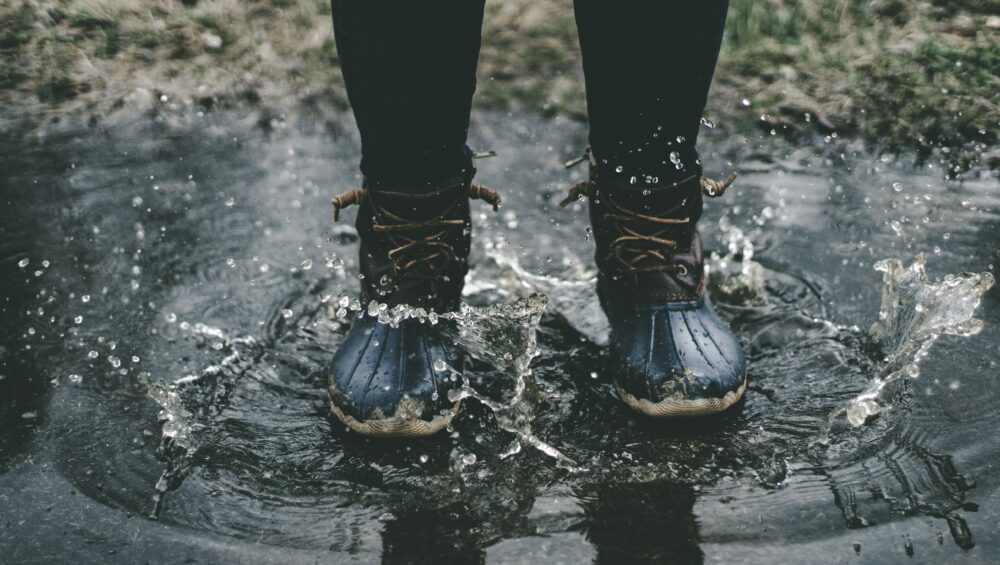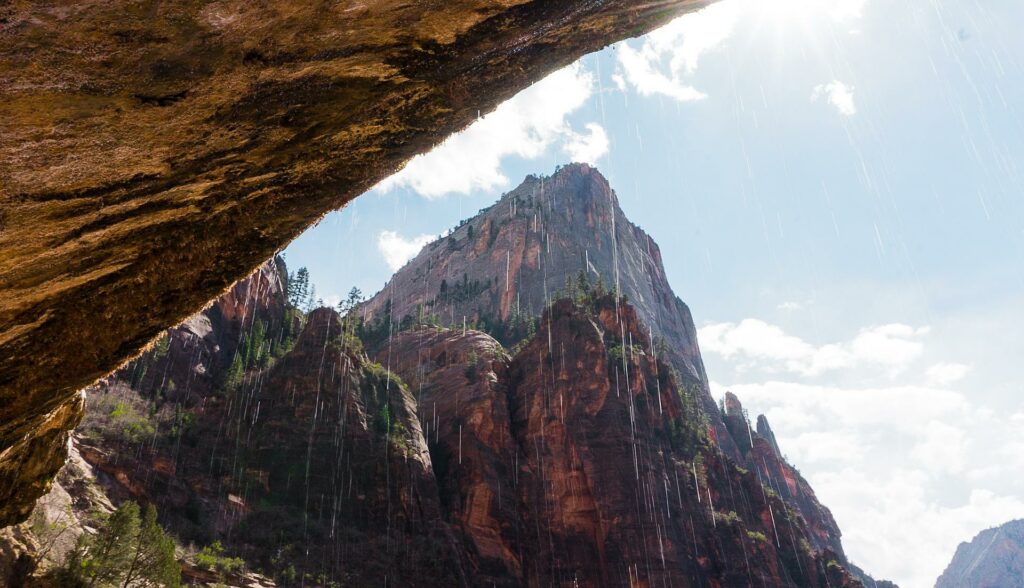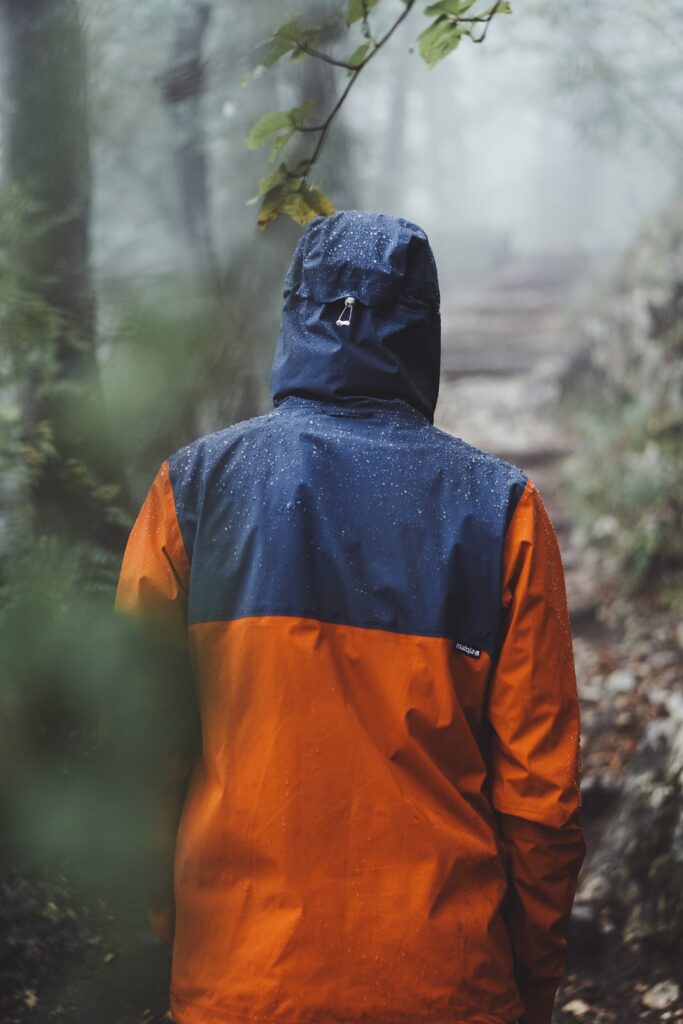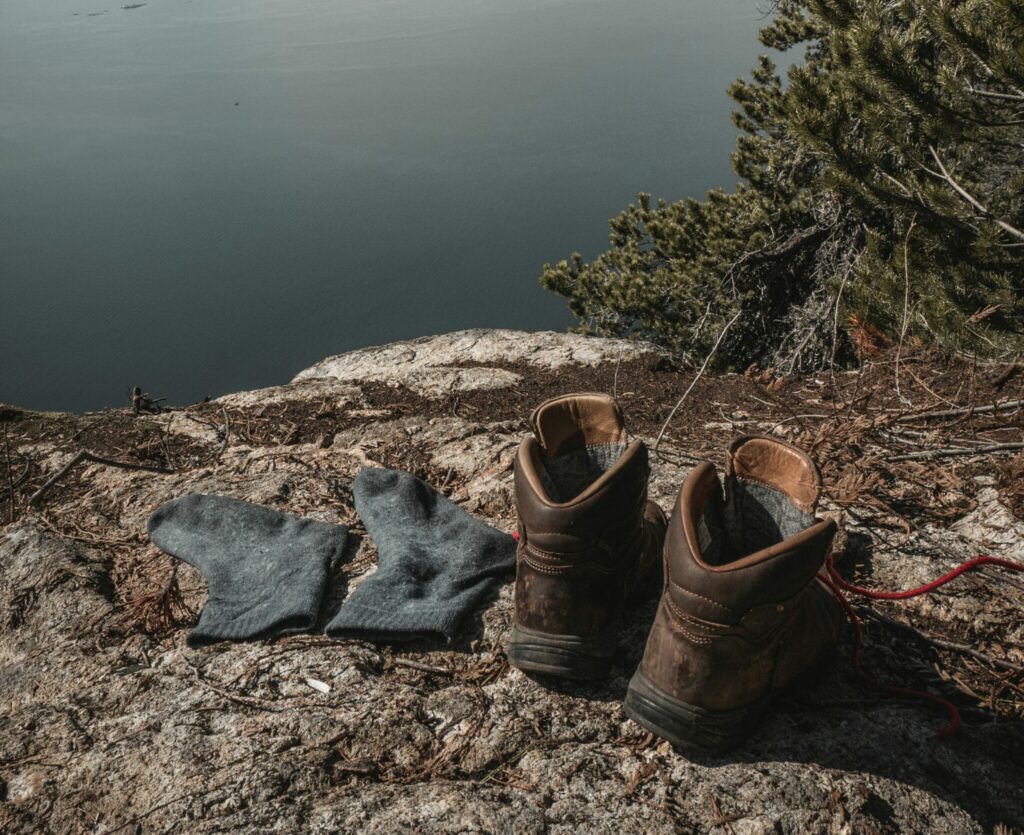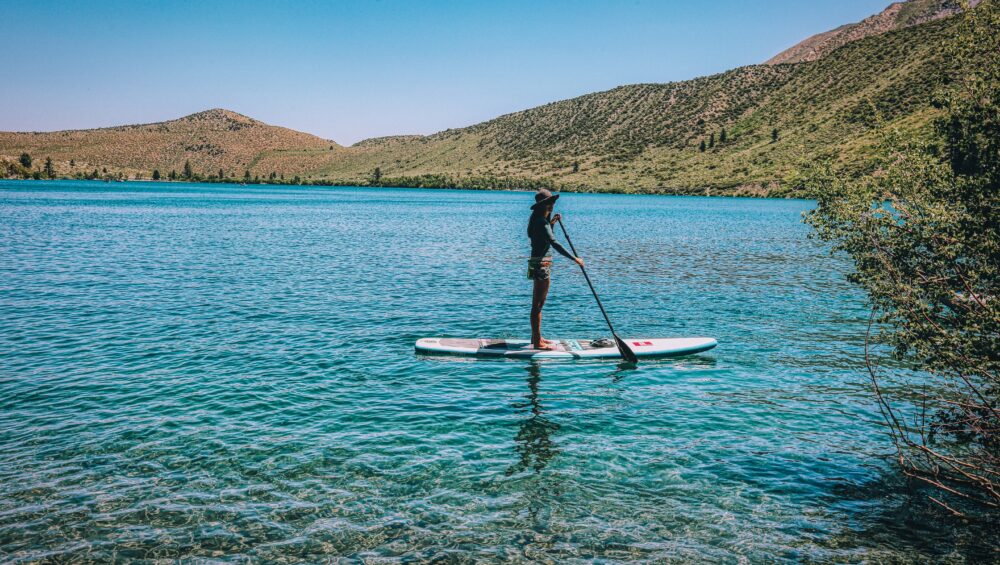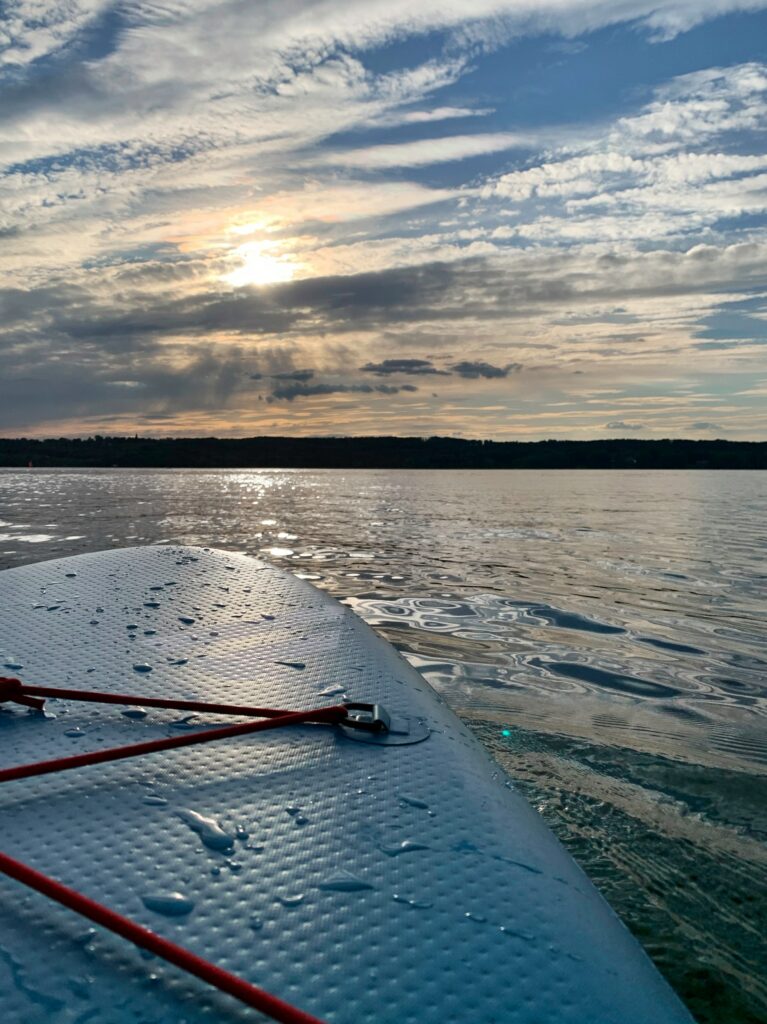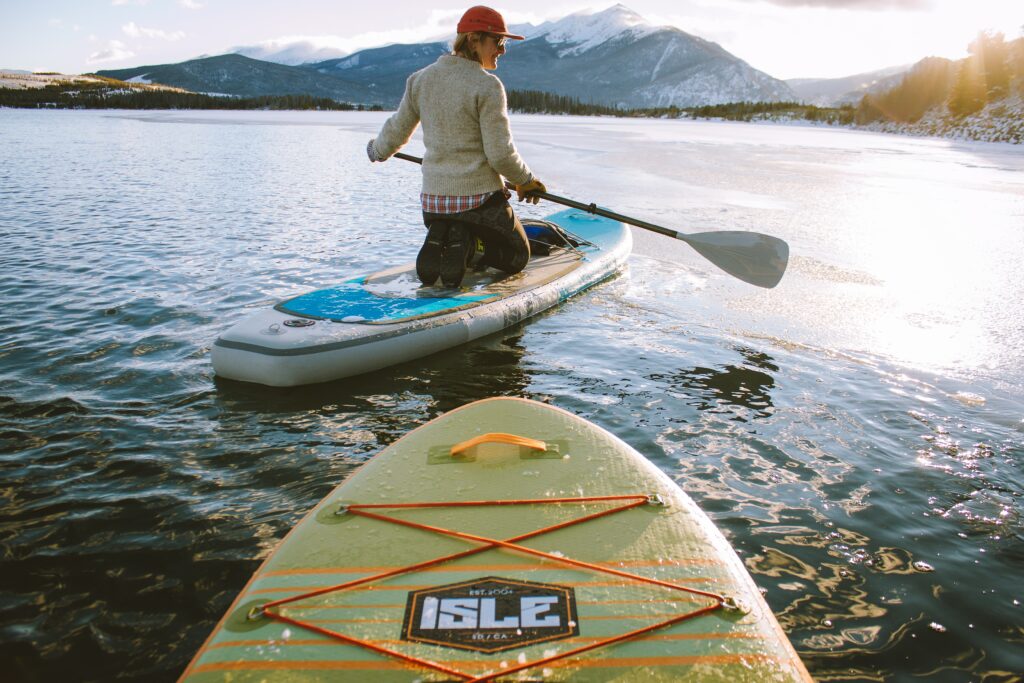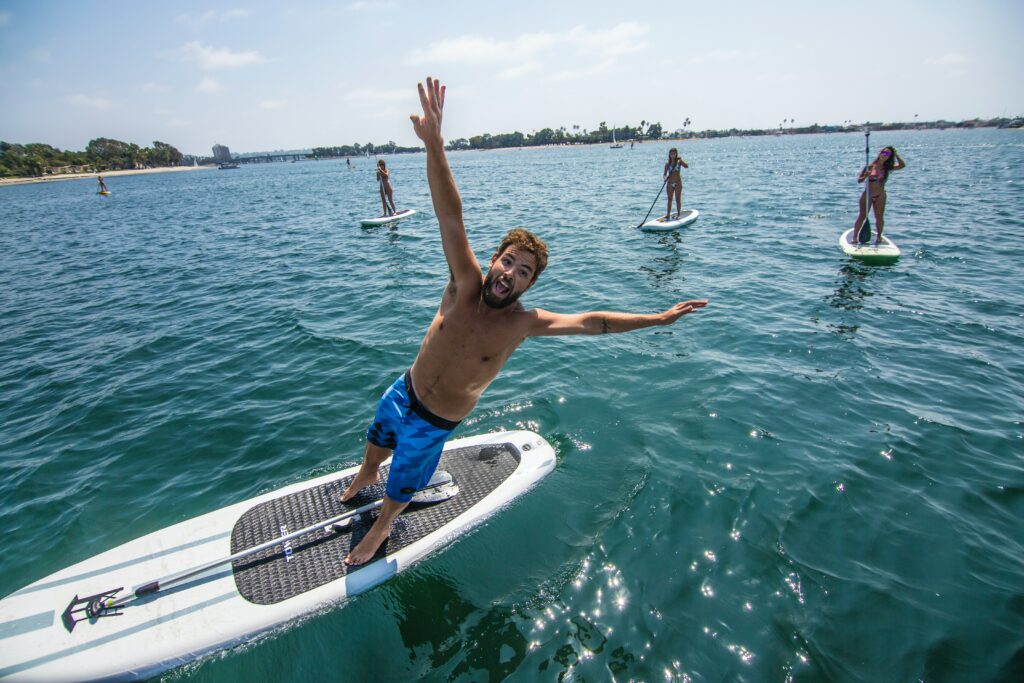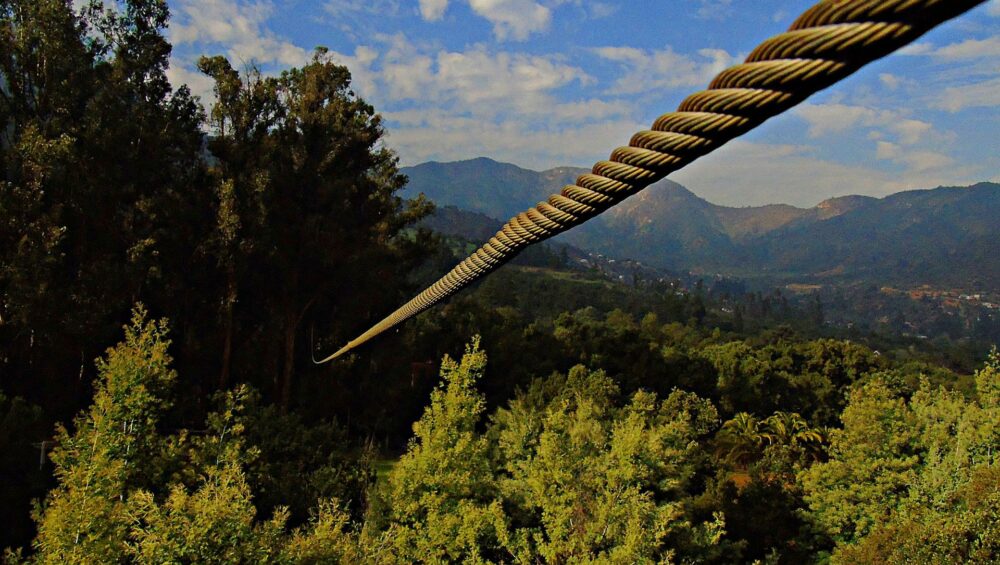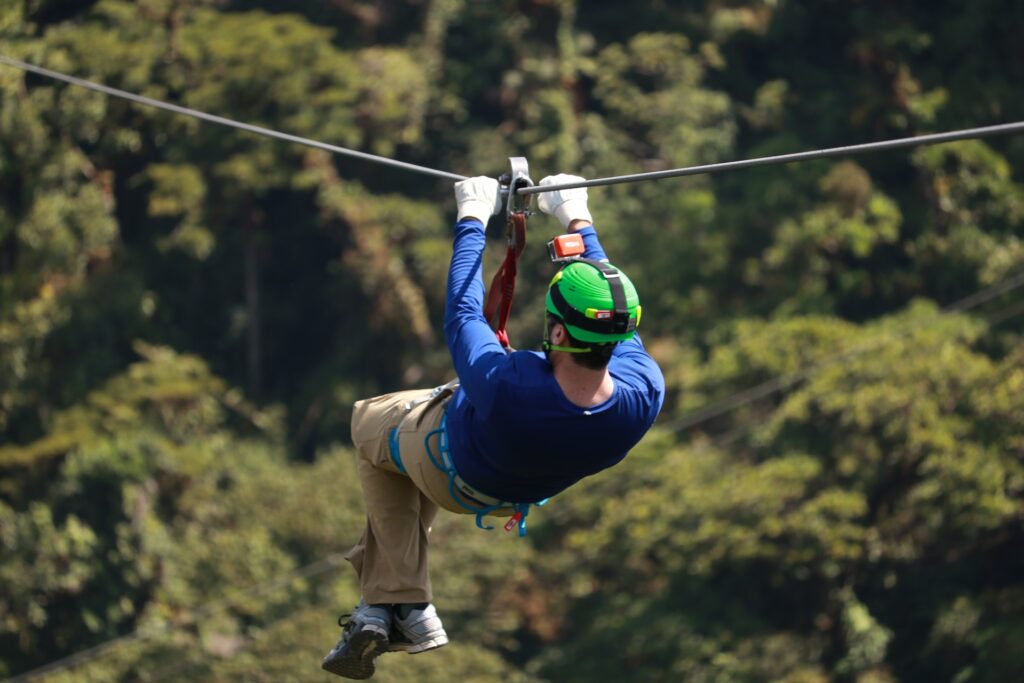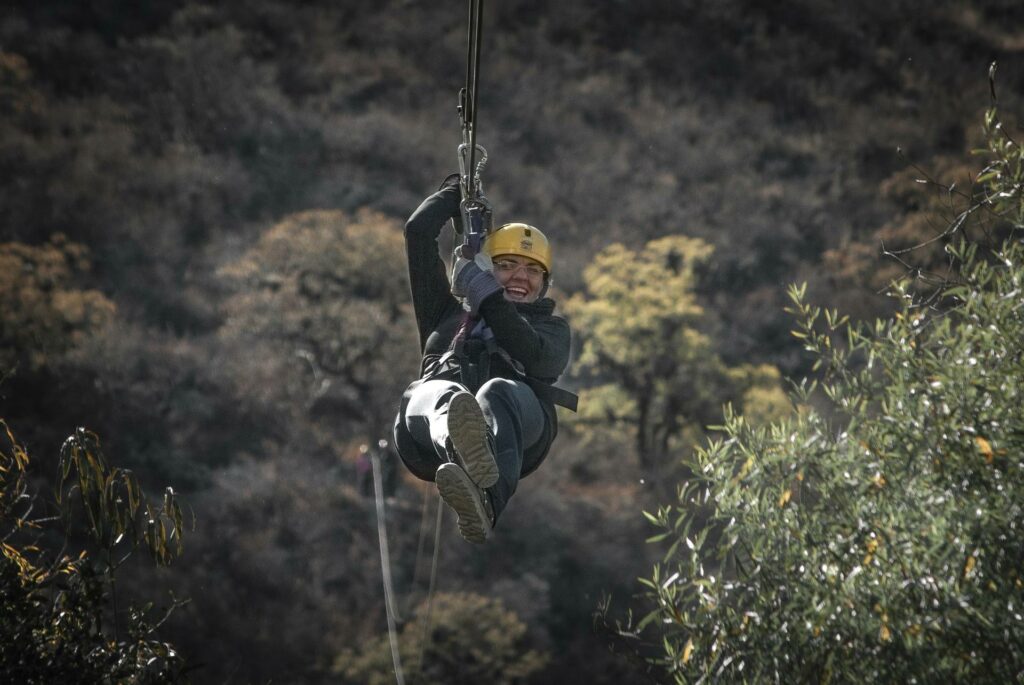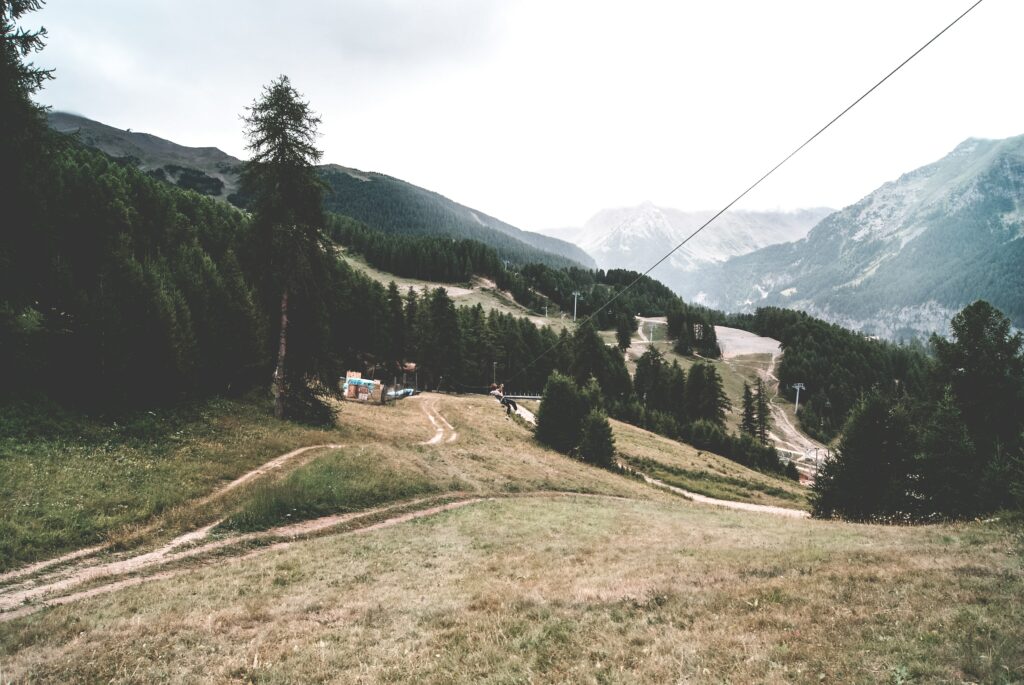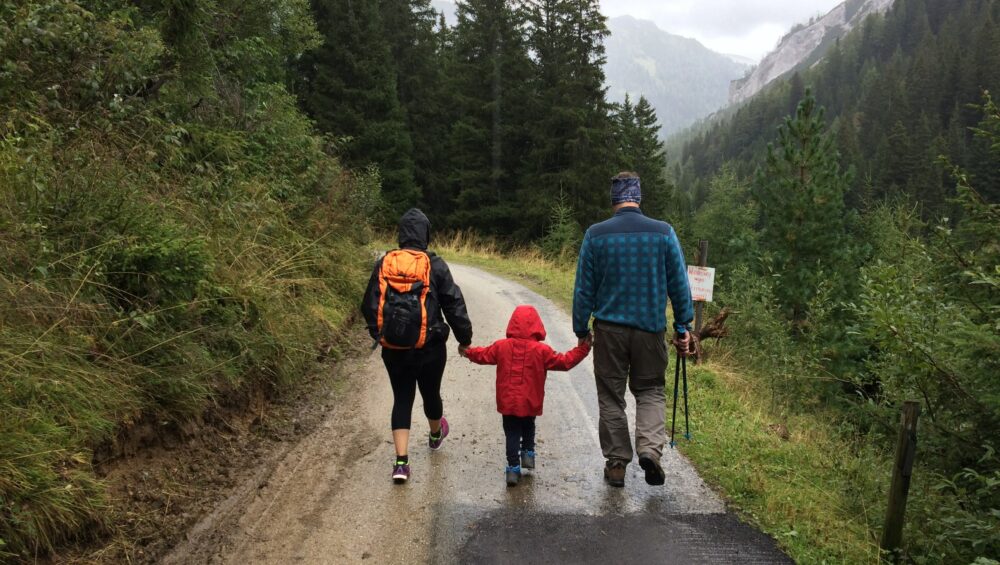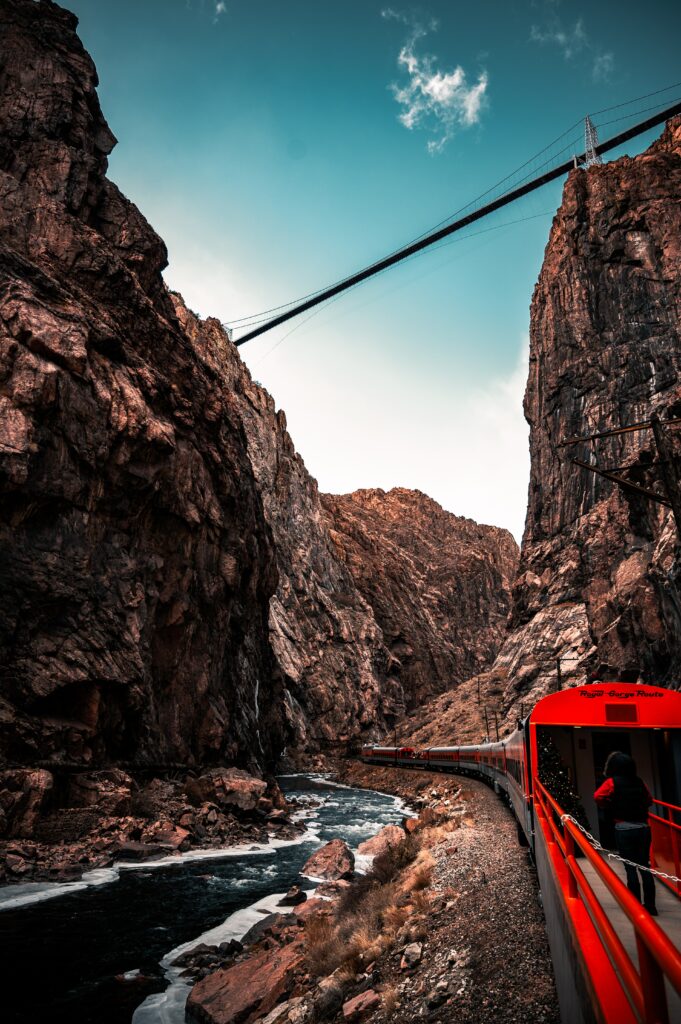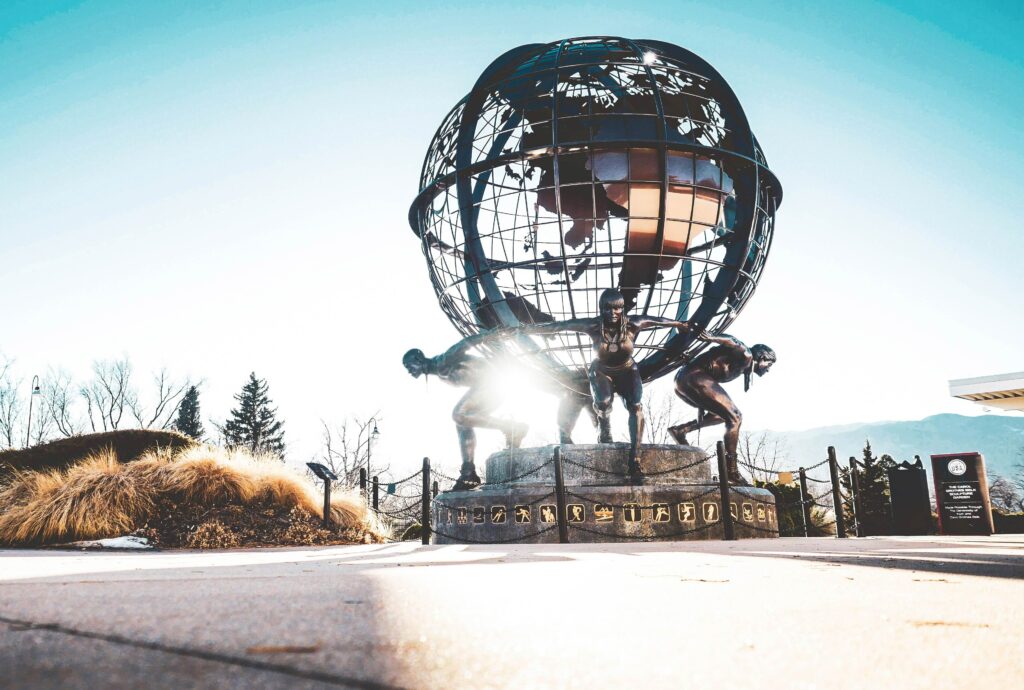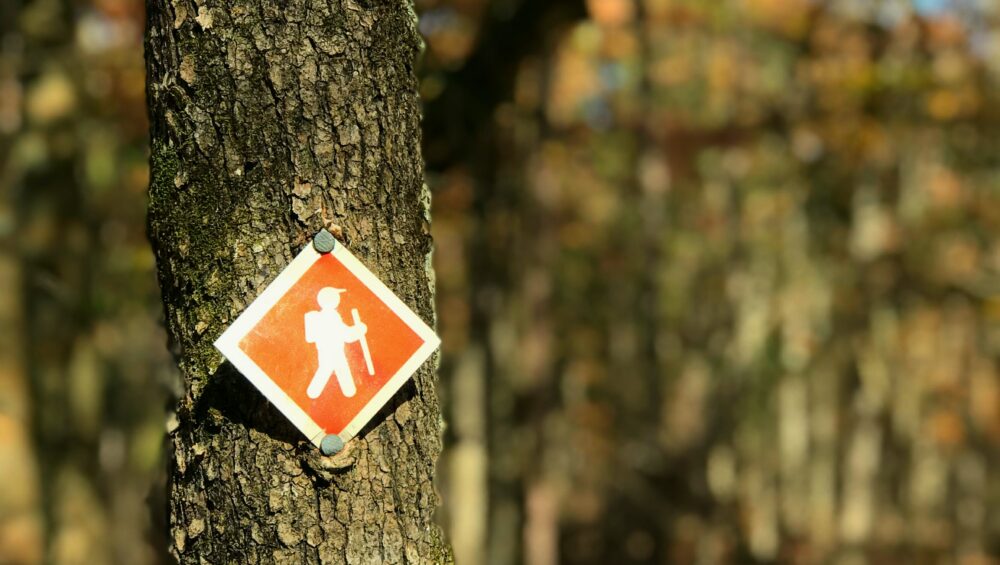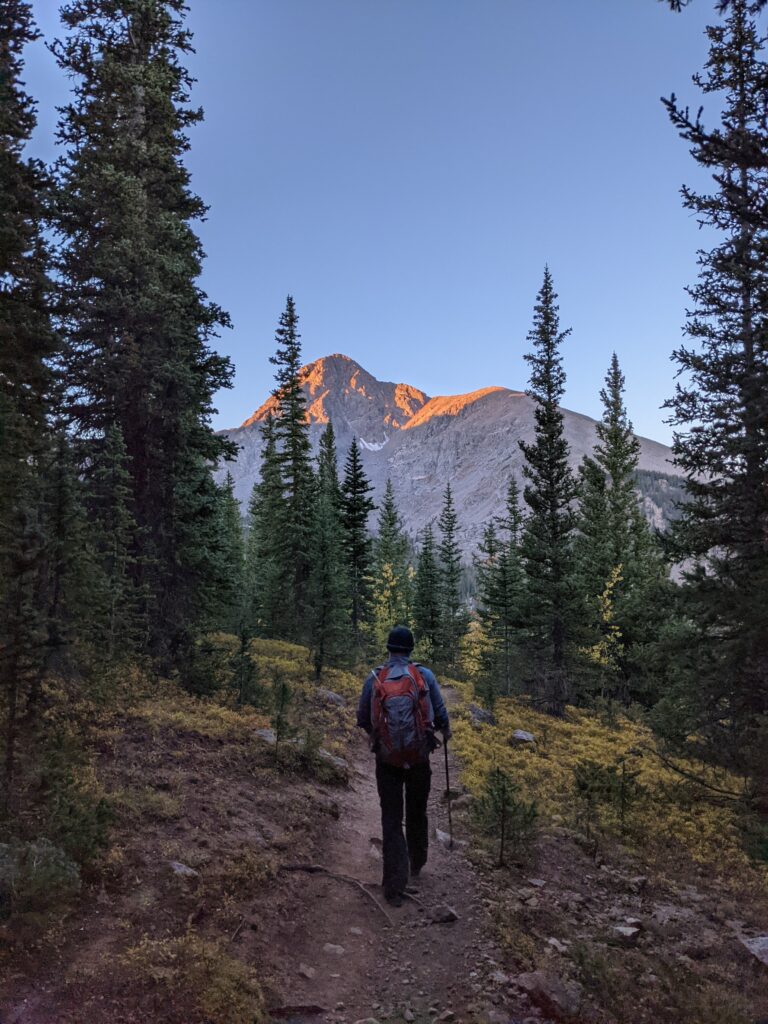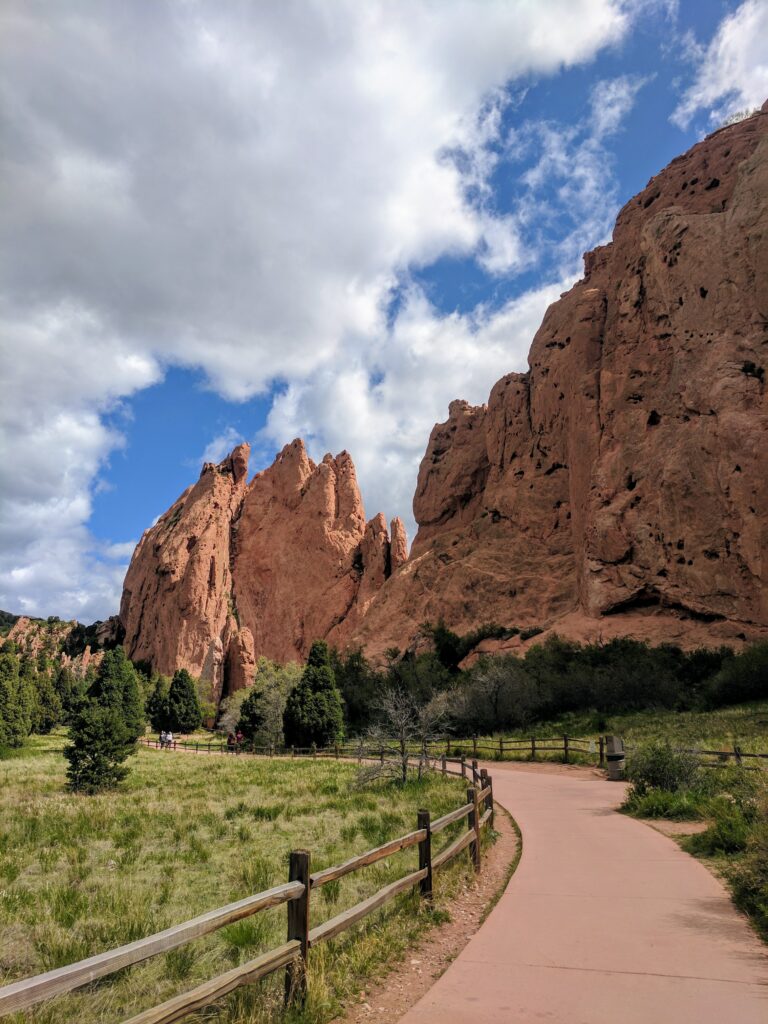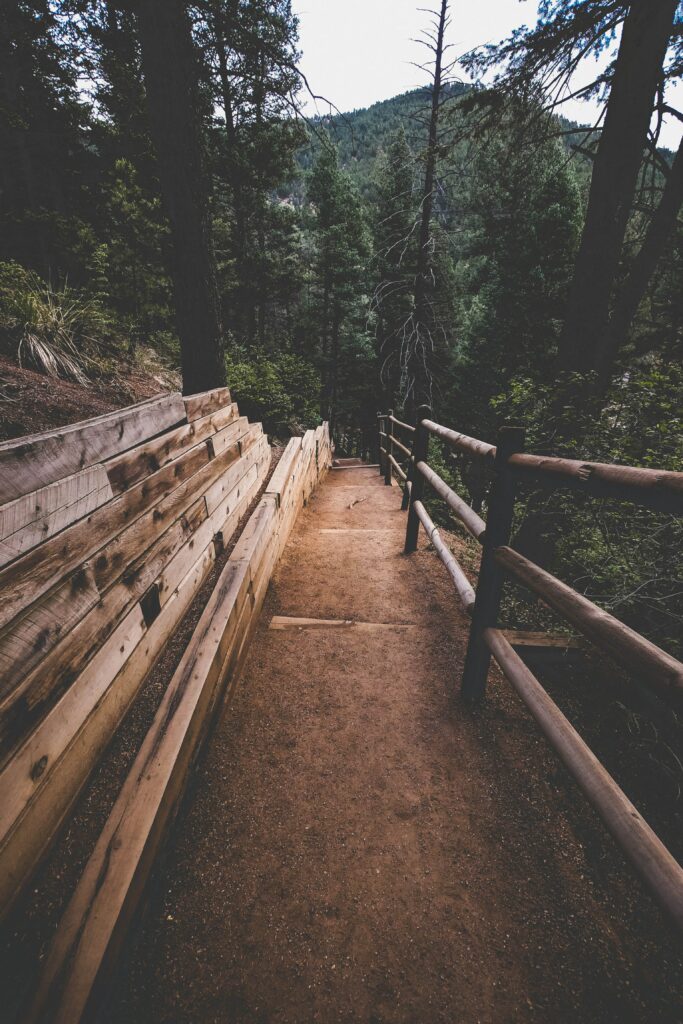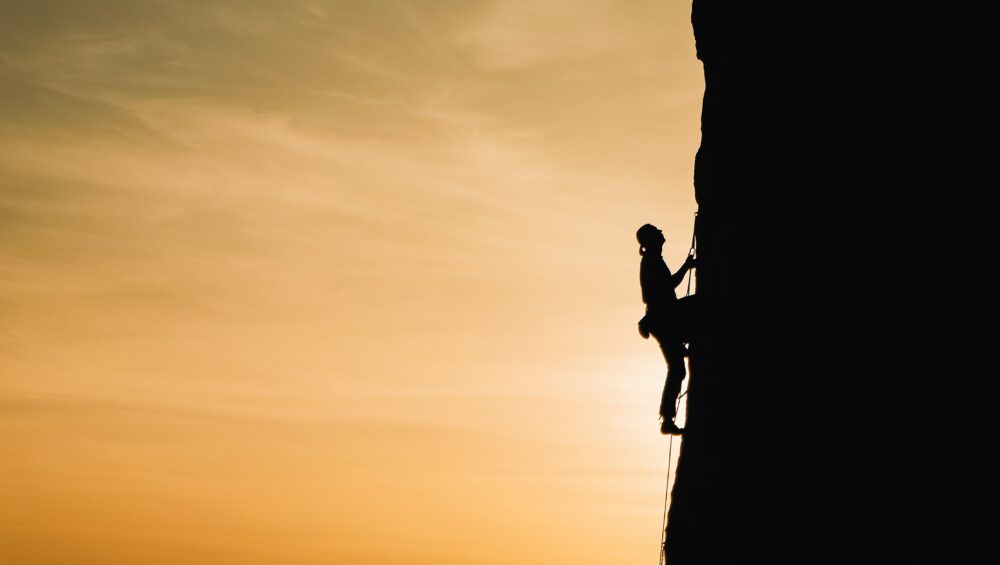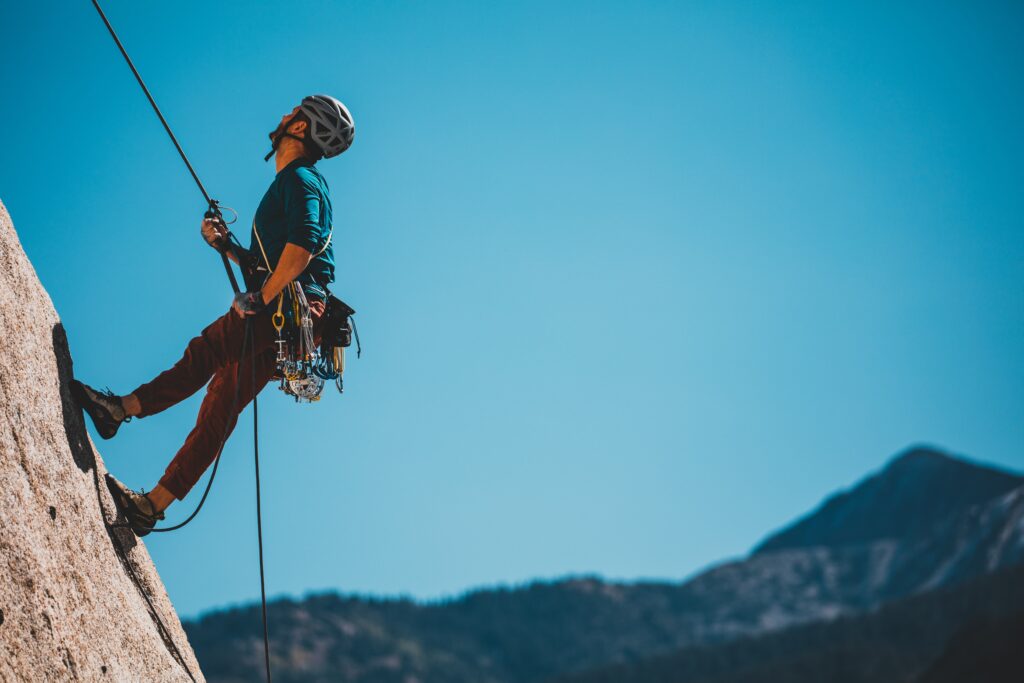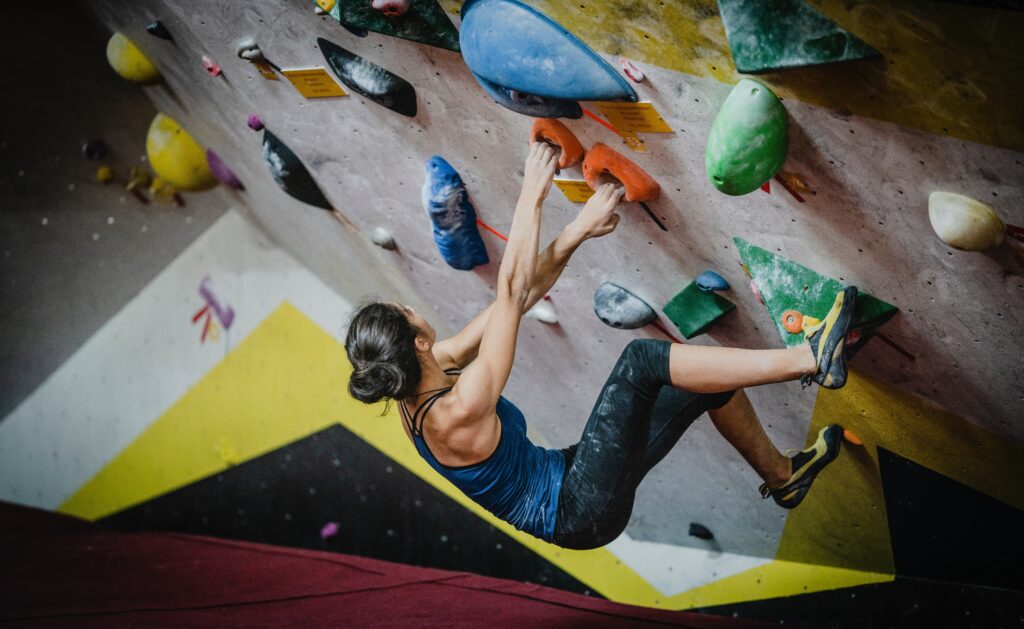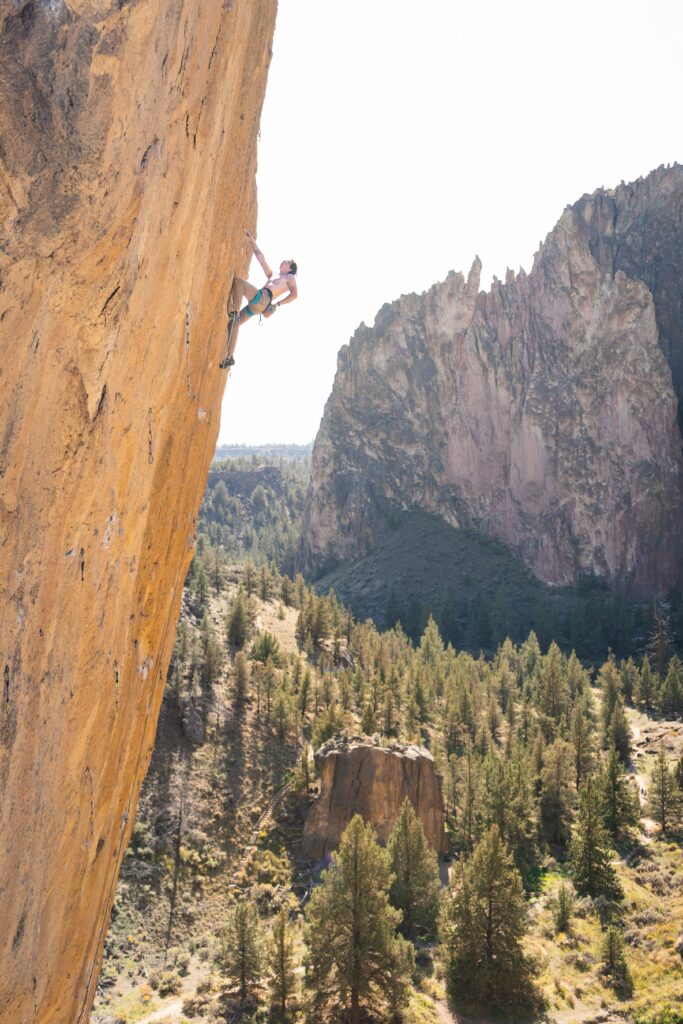Crisp air, cozy fleeces, and stunning aspen colors make for some of the best hiking conditions. Autumn in Colorado is stunning, and fall hiking near Colorado Springs is not something you want to miss! Oh, and did we mention the jaw-dropping mountain views?
The landscapes near Colorado Springs offer something for everyone. Between the aspen and pine forests, soothing creeks, and glistening mountain tops, it is hard to know where to start. Below you will find all the information you need on some of the best fall hikes near Colorado Springs.
A Quick Note
While generally safe, hiking does have potential risks: animal encounters, weather, and terrain. To set yourself up for success, always bring a pack and be prepared with food, water, layers, and other essentials. For more tips on getting prepared, check out how to pack for a day hike in Colorado.
Because bears are native to our beautiful state, bear safety is a factor to consider while preparing for and enjoying a hike here near Colorado Springs. Be sure to learn and follow NPS Animal Viewing guidelines and suggestions in order to enjoy wildlife sightings safely. When done safely, wildlife encounters can be a true highlight of the Colorado hiking experience!
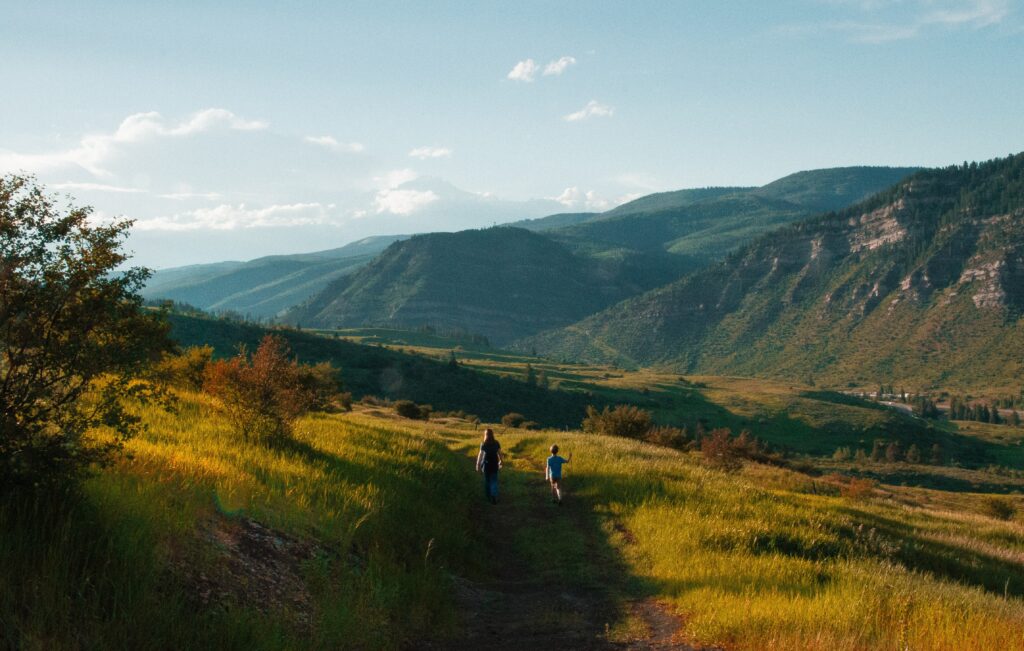
Preachers Hollow
Location: Mueller State Park
Distance: 20-25 minute drive, 15 miles from downtown Colorado Springs
Parking: Mueller State Park Visitors Center, 21045 Hwy S. Divide, CO
Permits: Colorado State Park Pass required per vehicle or you can purchase a day pass
Stats: 2.1-mile loop, 462 ft of elevation gain, easy
Note: Dogs are not allowed in the park
If you are looking for a fun beginner hike, look no further than Preachers Hollow. This loop offers a friendly multi-use trail with minimal elevation gain. Additionally, the loop style ensures that you will be exploring new terrain the whole route! You’ll find yourself wandering through canopies of aspens that open up to meadows with gorgeous views of the mountains in the distance. If you find yourself looking for a longer day, there are many other worthy trails in this park to explore.
The Palmer, Buckskin-Charley, Niobrara, and Bretag Trail Loop
Location: Garden of the Gods
Distance: 15-20 minute drive, 7 miles from downtown Colorado Springs
Parking: 1805 N. 30th St, Colorado Springs, CO; Park in the North Lot
Permits: Open to all hikers, no permit required
Stats: 4 miles round trip, 449 ft of elevation gain, easy
Hiking in the Garden of the Gods is a must-do when visiting Colorado Springs. The terrain in Garden of the Gods is open with little shade, so in the cooler temperatures, fall is the perfect time to hike this popular park. On this loop, hikers pass all of the unique rock formations in the park. There may also be opportunities to spot local wildlife or rock climbers scaling the rock. This park has tons of fun activities for people of all ages, and this trail is an accessible way to explore all the park’s best features.
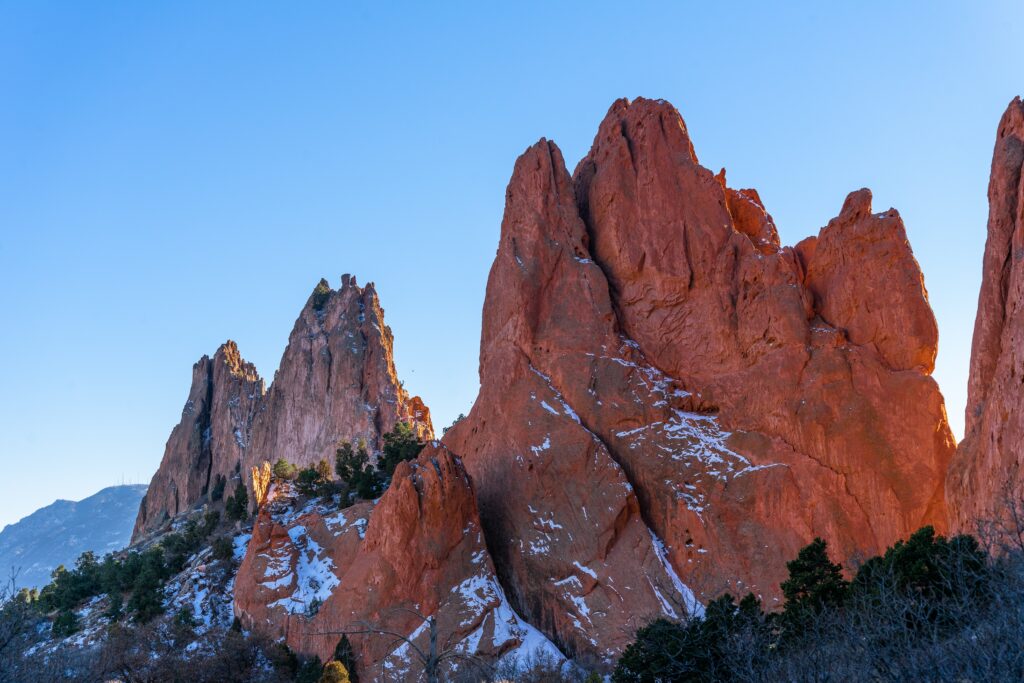
The Crags Trail
Location: 615 Teller Co Rd 62, Divide, CO
Distance: 50-60 minute drive, 34 miles from downtown
Parking: The Crags Trailhead, 615 Teller Co Rd 62, Divide, CO
Permits: Open to all hikers, no permit required
Stats: 4.8 miles round trip, 820 ft of gain, easy/moderate difficulty
Glistening granite features are a highlight of this trail. Before you get there, you will meander through aspens on a well-maintained trail. The trail then opens up to meadows and eventually, you will reach the top of the Crags Trails and enjoy stunning views of Pikes Peak. This hike also offers the opportunity to see the unique and twisted Bristlecone Pines native to the area.
Seven Bridges Trail
Location: North Cheyenne Cañon Park
Distance: 20-25 minute drive, 7.6 miles from downtown
Parking: Seven Bridges Trailhead, N Cheyenne Cañon Rd, Colorado Springs, CO
Permits: Open to all hikers, no permit required
Stats: 3.7 miles round-trip, 912 ft of gain, moderate difficulty
Aptly named for its defining features, Seven Bridges Trail swerves its way across North Cheyenne Creek via seven bridges. Not only do hikers enjoy the babbling of the creek underfoot, but this trail also offers fall hikers a golden aspen grove near the seventh bridge. The end of the trail has beautiful views of the creek, valley, and Colorado Springs below. This is a moderate hike with good protection from the elements, making it a good choice in breezy weather.
Mount Buckhorn Peak
Location: North Cheyenne Cañon Park
Distance: 25-30 minute drive, 8.2 miles from downtown
Parking: Starsmore Discovery Center, 2120 S Cheyenne Cañon Rd, Colorado Springs, CO
Permits: Open to all hikers, no permit required
Stats: 3.9 miles round trip, 859 ft of gain, moderate difficulty
While views from any mountain peak are magical and inspiring, nothing compares to the 360-degree views from atop this one. At an elevation of 8,380 ft, Mount Buckhorn will satisfy every mountain lover’s dreams. It is a little harder to get to, but definitely worth it. This is an out-and-back trail through thick forests ending atop a peak filled with budging boulders. The views from the top are spectacular year-round, but especially with the fall foliage, making this one of the best fall hikes near Colorado Springs.
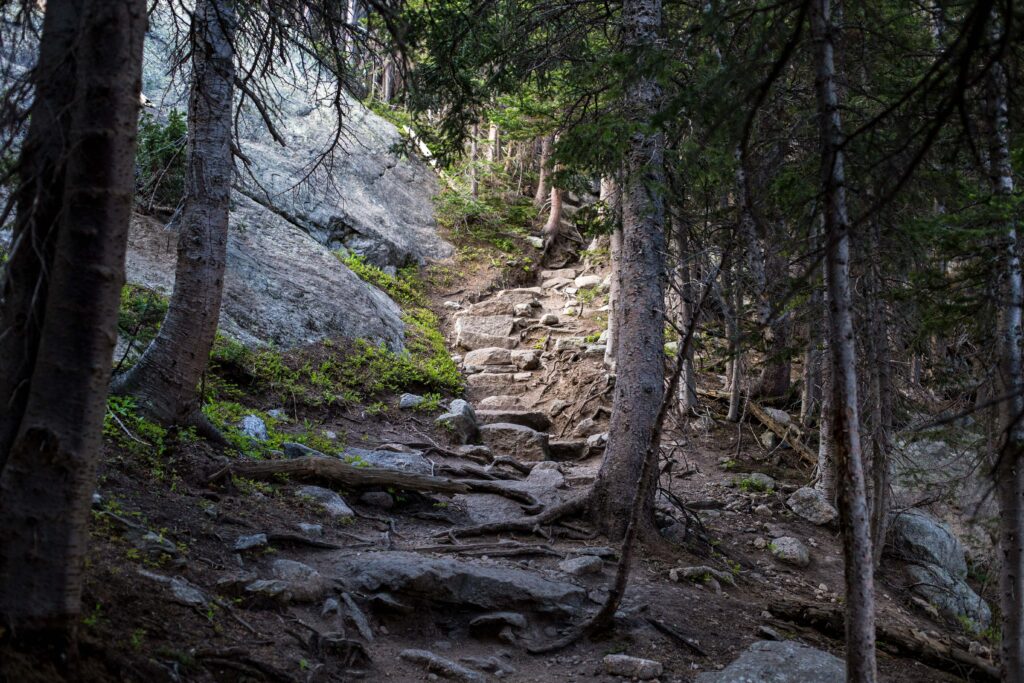
Columbine Trail
Location: North Cheyenne Cañon Park
Distance: 15-20 minute drive, 6 miles from downtown
Parking: Starsmore Discovery Center, 2120 S Cheyenne Cañon Rd, Colorado Springs CO
Permits: Open to all hikers, no permit required
Stats: 7.6 miles round trip, 1,607 ft of gain, moderate/hard difficulty
The Columbine Trial is a great hike close to town that offers stunning views, opportunities to see tons of flora and fauna, and flexibility for different hiking abilities. This trail has three different starting points, lower, middle, and upper trailheads, which allow you to customize the hike length depending on how much time you have. No matter where you start, you will follow the creek up the canyon and be treated to the sounds of birds and views of the surrounding mountains.
Colorado Springs is a perfect destination for fall hikers. With easy access to a multitude of trails and nature areas, adventure awaits hikers of all skill levels. If you are new to hiking, Broadmoor Outfitters offers Guided Hikes so you can be sure you will see some of the best hiking trails in Colorado Springs. There’s no better time than autumn in Colorado, so lace up your boots and get out there!

